How to report construction blocking your bike lane in DC
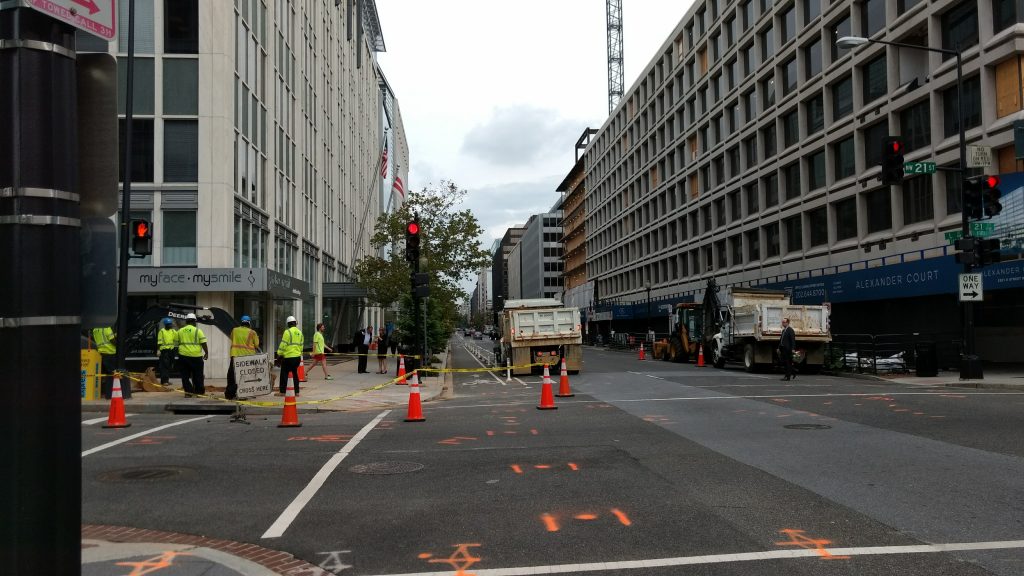
You may have noticed. . . the bike lanes we’ve worked so hard to get built over the years are frequently closed or unusable because of construction, road maintenance, and utility work. Beyond being annoying and scary, these closures are also frequently illegal.
What does the law require?
DC law requires that when a bike lane or sidewalk is closed for construction, an equally safe accommodation, free of hazards and debris, must be provided. This has been the law since 2013. Unfortunately, we know from experience that violations occur around the city on a daily basis.
This has real consequences. Closing a bike lane— especially without adequate signage— forces bicyclists to quickly merge into a shared traffic lane with motor vehicles, putting bicyclists in danger, upsetting drivers, and discouraging less confident bicyclists from riding at all.
The District is experiencing a construction boom with no end in sight. Bicycling is more popular than ever. It is essential that the city keep bicyclists safe where construction impacts bike infrastructure. That won’t happen without advocacy.
We’ve created an online reporting form to walk you through the information DDOT needs to investigate the suspected violation.
Why report violations?
Short term, we want dangerous conditions on the roadways fixed as quickly as possible so no one gets hurt, and so bicyclists have confidence that when they set out by bike, the protected lanes they rely on will be available and safe.
Long term, WABA and DDOT will use this reporting data to help identify recurring problems and repeat permit violators. This will help with developing systemic solutions— like trainings, permit guidance and targeted enforcement.
Things to report:
Any time construction closes a protected bike lane, trail or sidewalk, the contractor must provide a route through the construction area that equivalent to the level of protection of what is being closed (subject to a few exceptions covered below). So, in the most basic sense, if it’s a protected bike lane, like this:
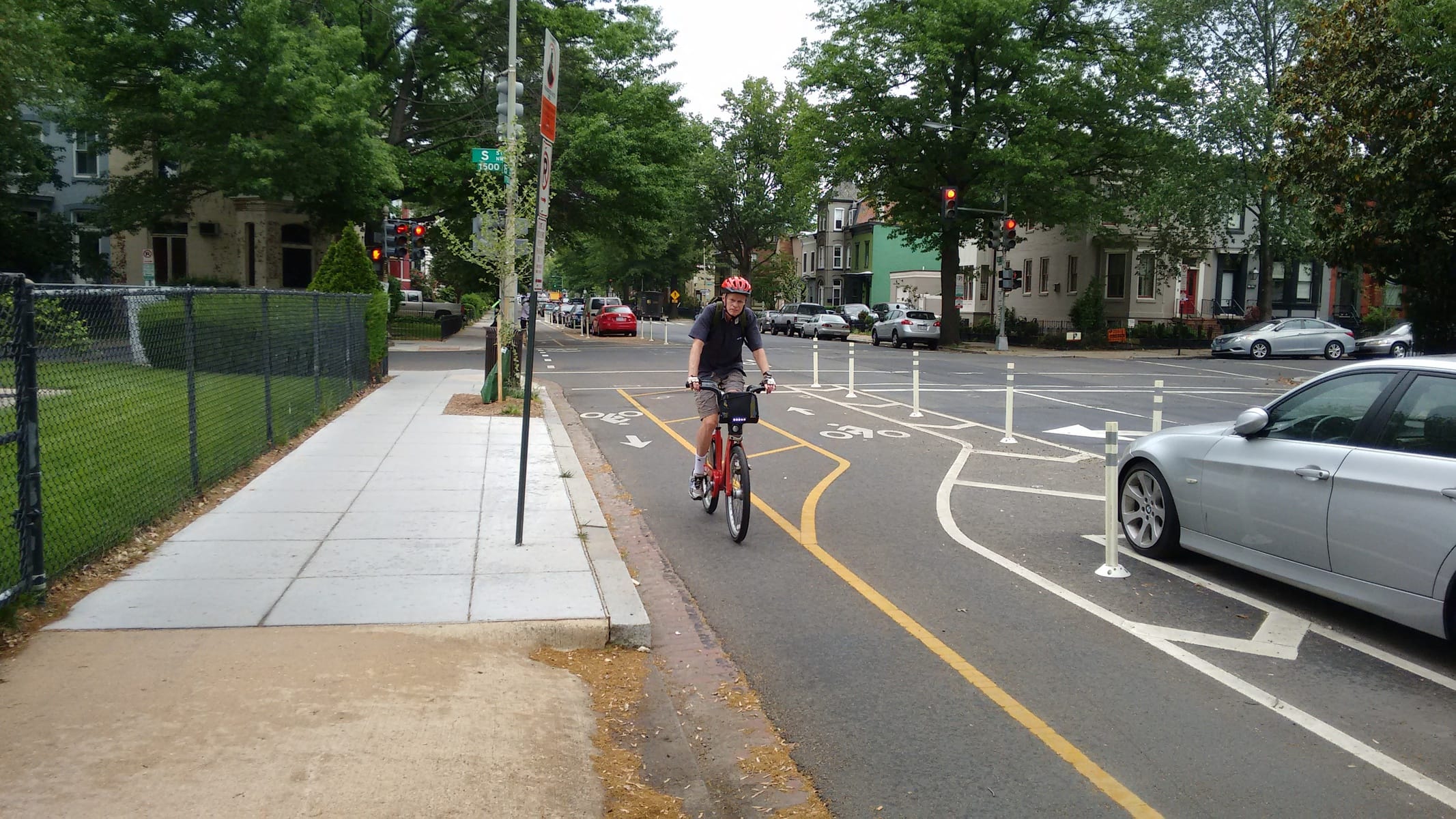
it should have a protected accommodation, like this:
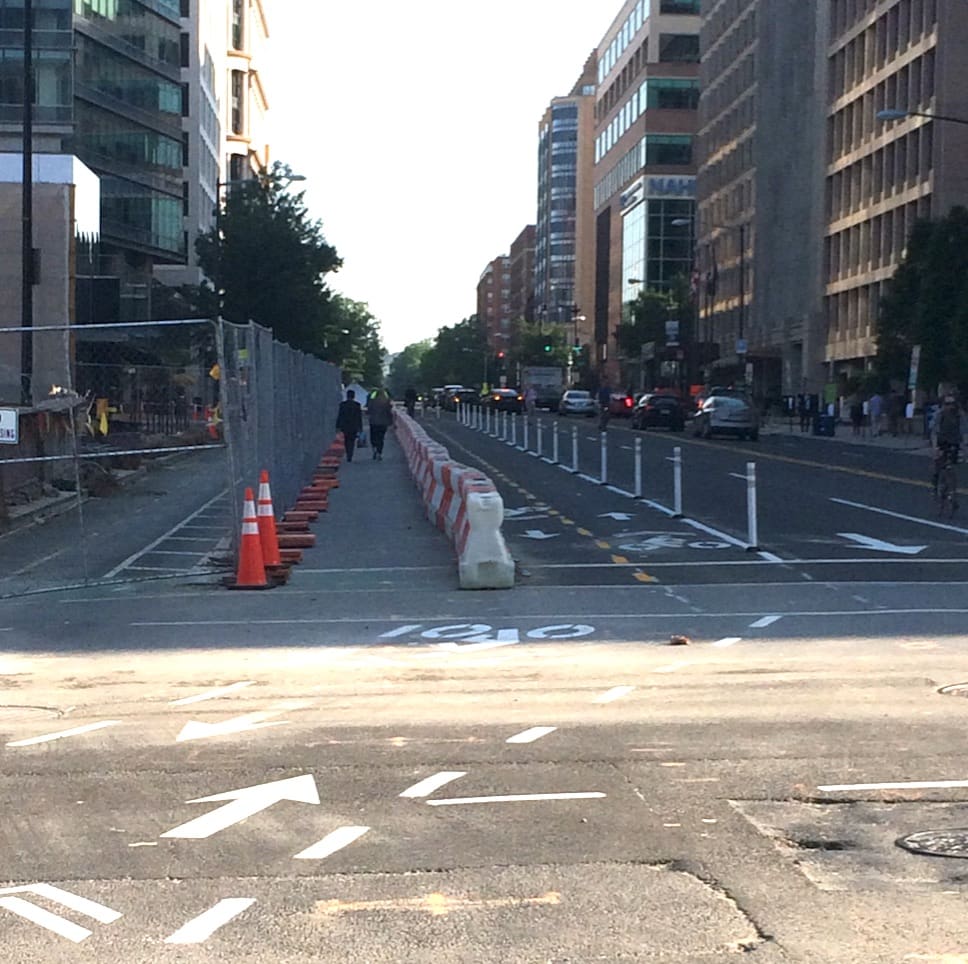 Note on the far left behind the fencing is the original protected bike lane. Everything has been shifted right to make a sidewalk and bike lane from taking over a lane of traffic.
Note on the far left behind the fencing is the original protected bike lane. Everything has been shifted right to make a sidewalk and bike lane from taking over a lane of traffic.
If it is a striped bike lane like this:
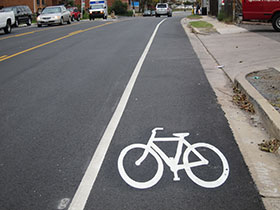
There should be a separate place on the road for the exclusive use of bicyclists.
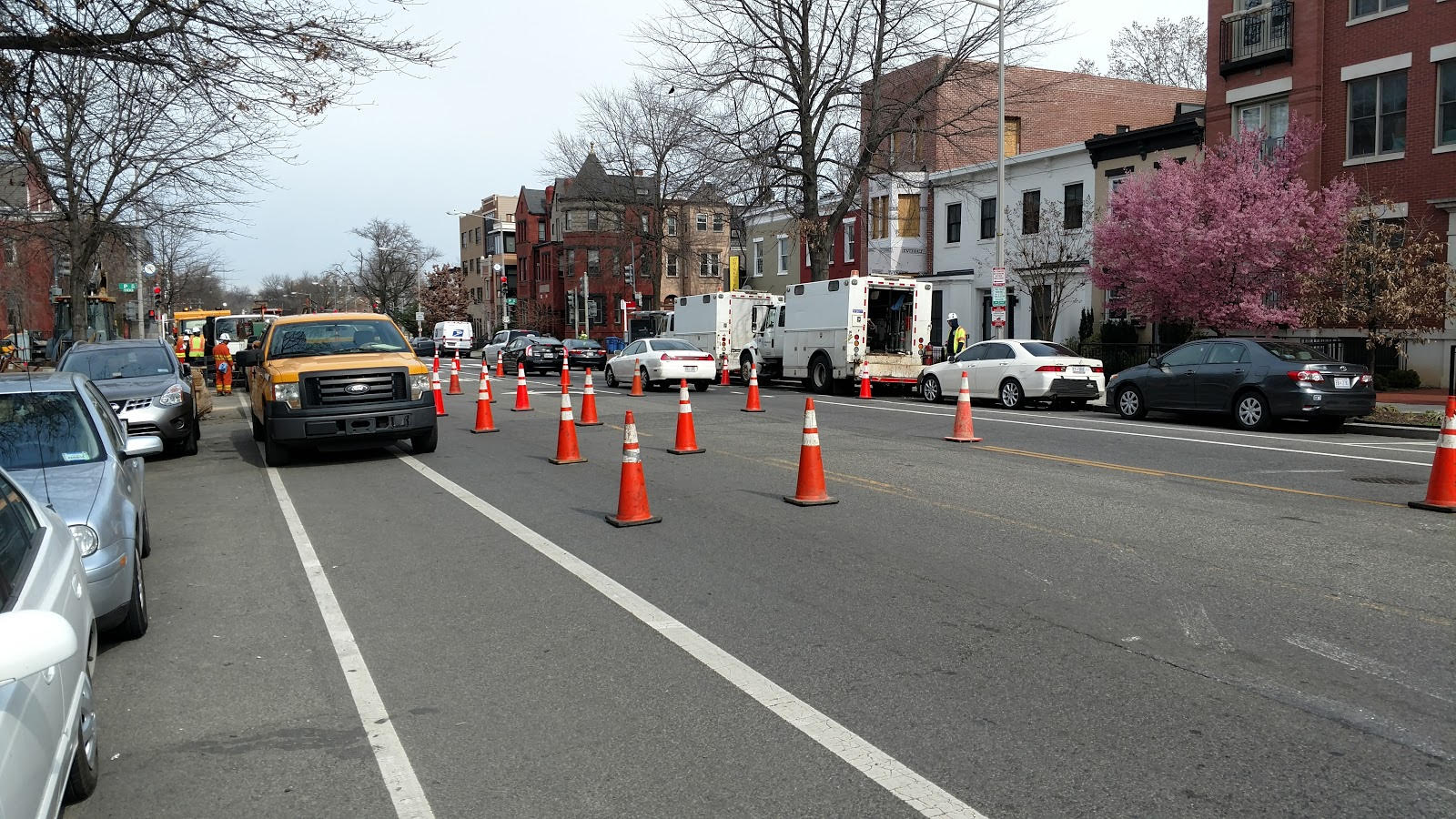 In the example above, the bike lane is shifted to the left, marked by traffic cones.
In the example above, the bike lane is shifted to the left, marked by traffic cones.
The accommodation should be free of obstructions and debris.
unlike this…
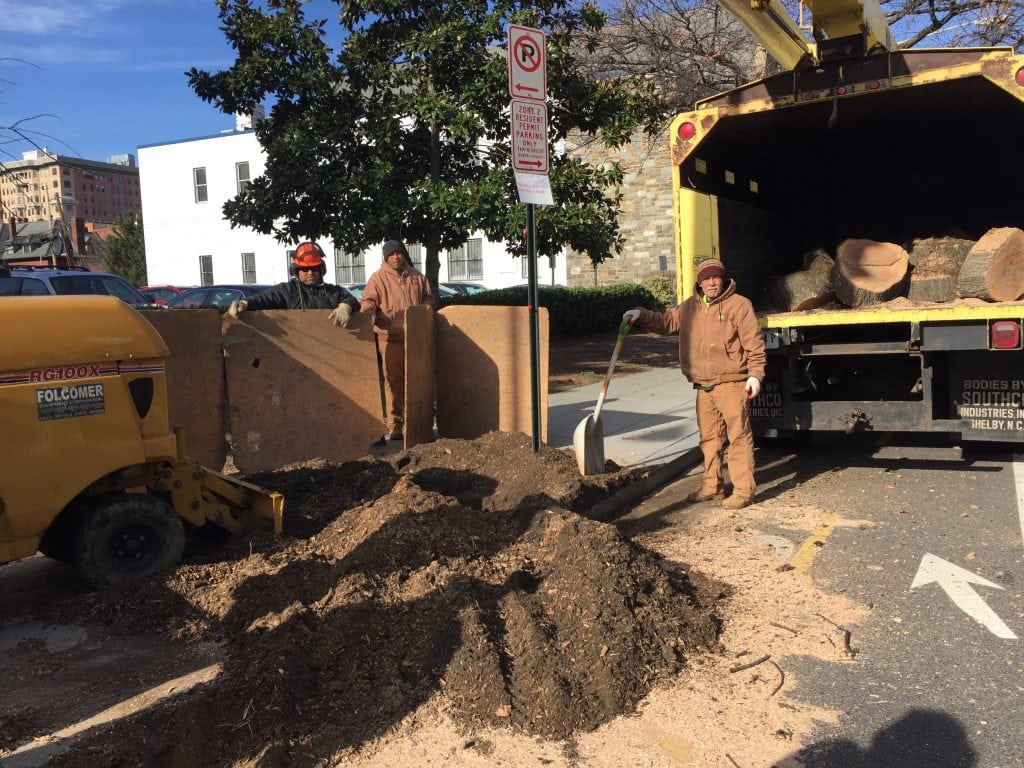
and this:
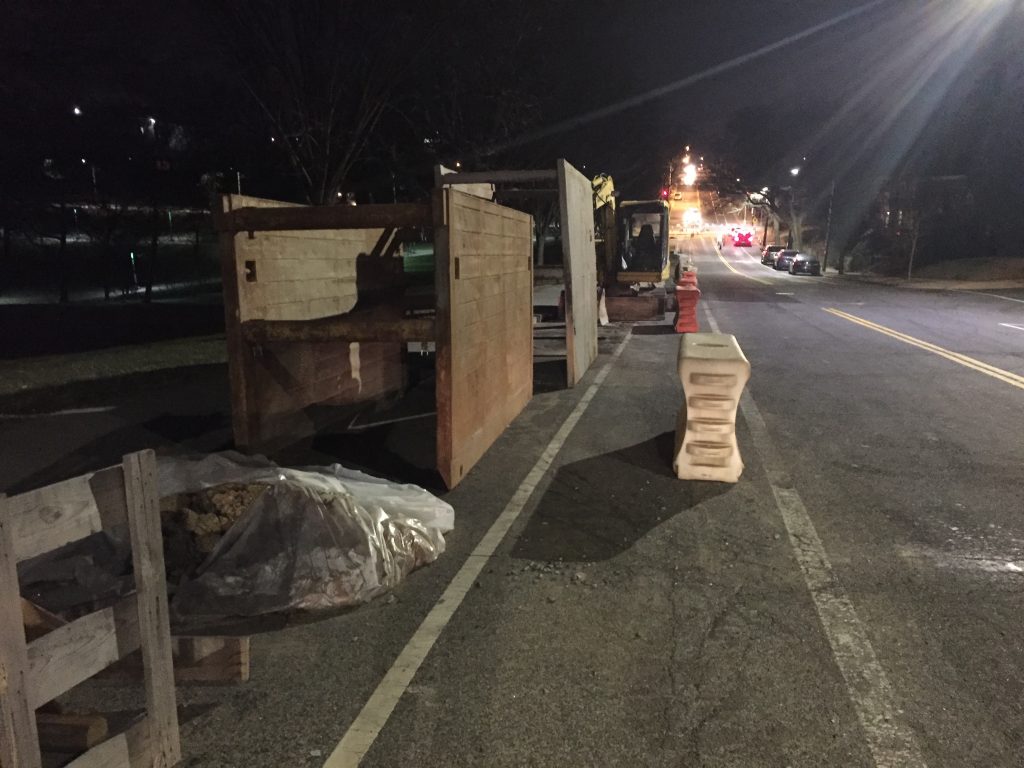
and this.

Exceptions:
Sometimes, there simply isn’t enough space to provide an equivalent accommodation. However, before providing a less than equivalent accommodation, the city must first close an adjacent lane of parking (if there is one) or close a lane of traffic.
So, if an equivalent accommodation has not been provided, but there is still an adjacent row of parking, or more than one lane of vehicle traffic open in either direction, the Safe Accommodations law is being violated.
Should I report this? A flow chart:
(click image for a larger version)
Don’t overthink it. The point of the law is to keep bicyclists and pedestrians safe. If it seems unsafe, it probably isn’t compliant with the law.
How to report violations in DC
We’ve created an online reporting form to walk you through the information DDOT needs to investigate the suspected violation.
Fill out the required questions (email, date, construction site address, etc).
When you submit the form, it will send you an automated email response. If you are able to snap a few pictures of the site you are reporting, reply to that confirmation email and upload your photos as an attachment.
The form will generate a report to the Public Space Regulatory Administration staff, who are responsible for approving and inspecting the traffic control plans in public space permits. They have the authority to shut down a construction site if it is violating the safe accommodations law.
You can use the email chain from the confirmation email to follow up with WABA and DDOT as-needed.
Want to know more?
Check out the slides from our Safe Accommodations Training:
Still have questions? Send an email to advocacy@waba.org.
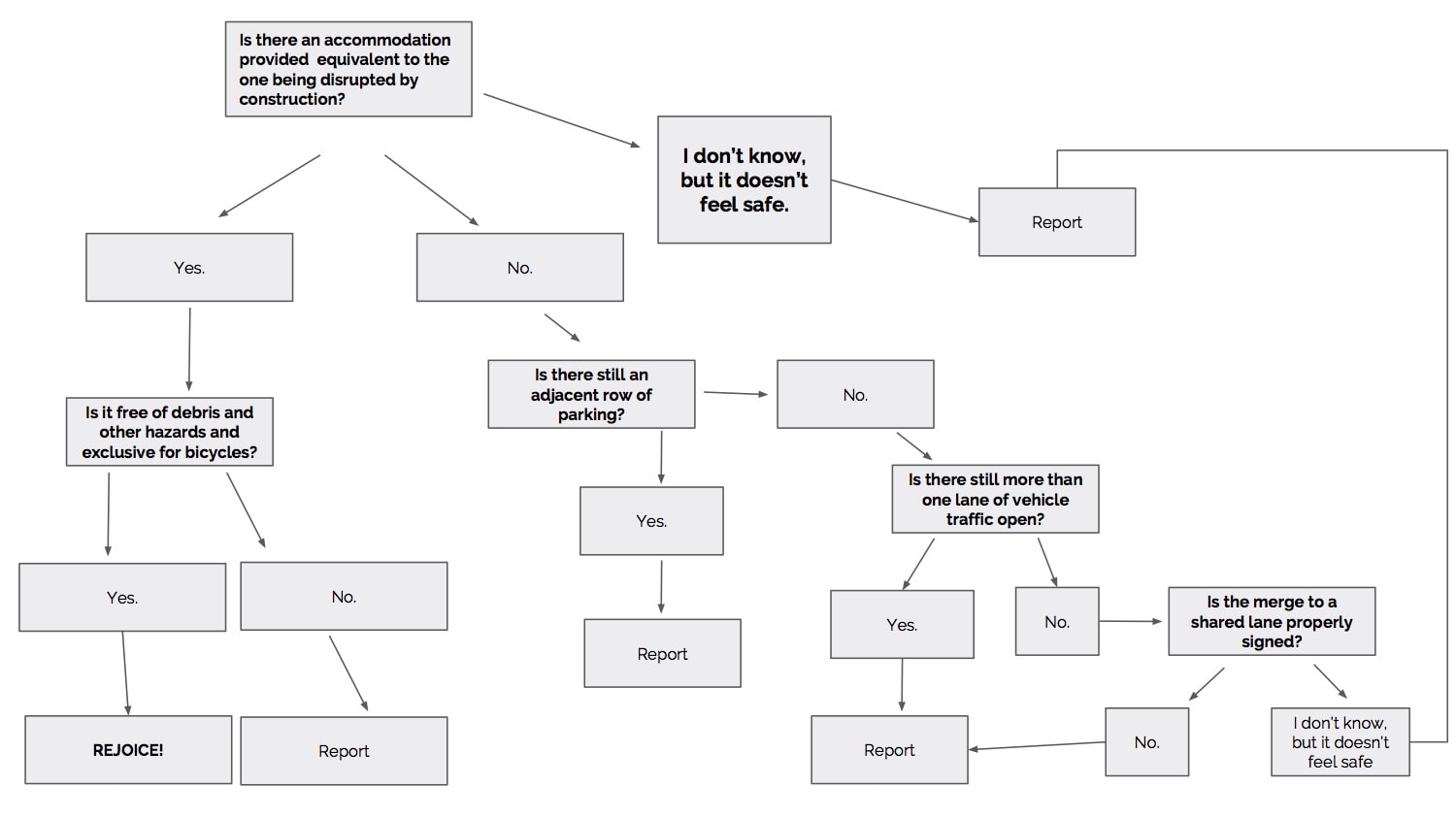
You must be logged in to post a comment.